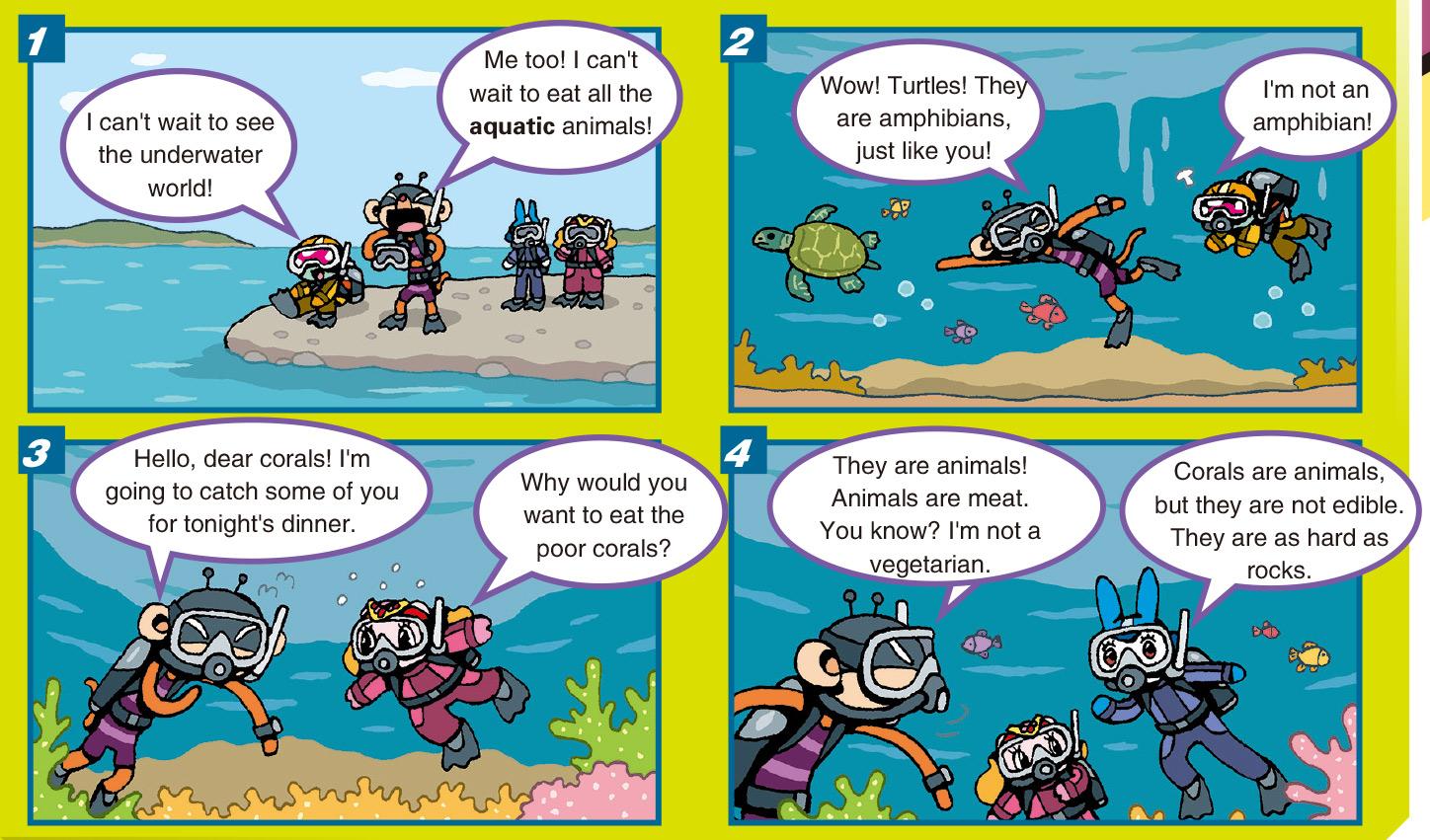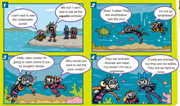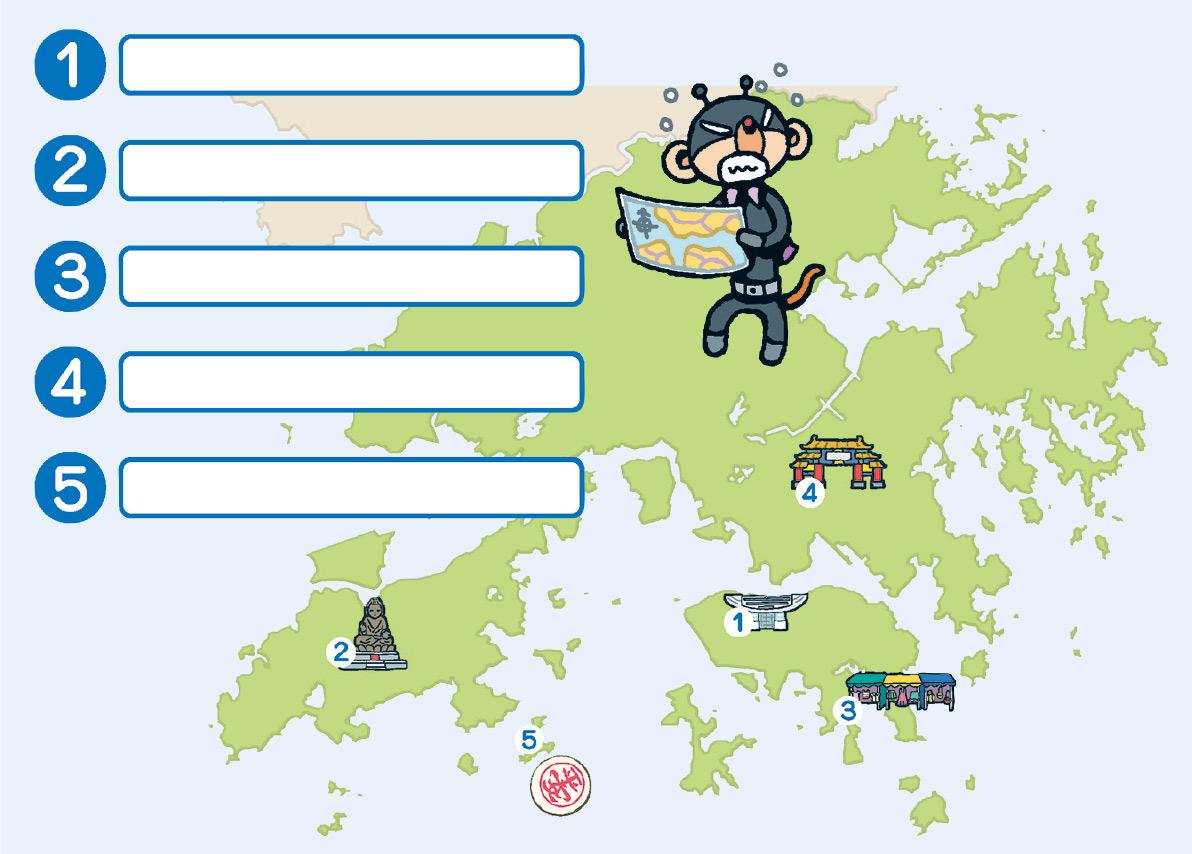Animal classification
【明報專訊】The Smarties and Eason are getting ready for scuba diving.
■Know more
Scientists divide living things into categories based on their common features. This is called classification. It helps us organise and understand living things.
Animals are broadly classified into two main groups, namely vertebrates (脊椎動物) and invertebrates (無脊椎動物). Vertebrates are animals with a backbone, while invertebrates are the ones without a backbone. Worms, squids and corals fall in this category. However, snakes are vertebrates as they have a backbone.
Vertebrates and invertebrates are further divided into smaller groups. For example, vertebrates are split into reptiles (爬行動物), amphibians (兩棲動物), birds, mammals (哺乳動物) and fish. Among them, amphibians and reptiles share some similarities which may cause confusion. Although frogs, turtles and crocodiles spend time both on land and in water, only frogs are amphibians. Unlike amphibians, reptiles are known for their dry, scaly skin. They breathe only through their lungs, while most amphibians breathe through their lungs and moist skin.
■English highway
While
can be used to express a contrast. It is similar to "whereas" or "although".
We need a comma before it.
e.g. Jenny wanted to go to the party, while I wanted to stay at home.
■Glossary
aquatic (adj) 水生的
category (n) 種類
classification (n) 分類
broadly (adv) 概括地
(Criticisms on this publication, if any, are aimed at pointing out the errors or defects of certain systems or policies with a view to rectifying or eradicating such errors or defects, as well as prompting improvement or remedy for them via lawful means. There is absolutely no intention of inciting hatred, discontent or hostility towards the government or other classes of the community.)
[Smarties' Power English 第353期]






